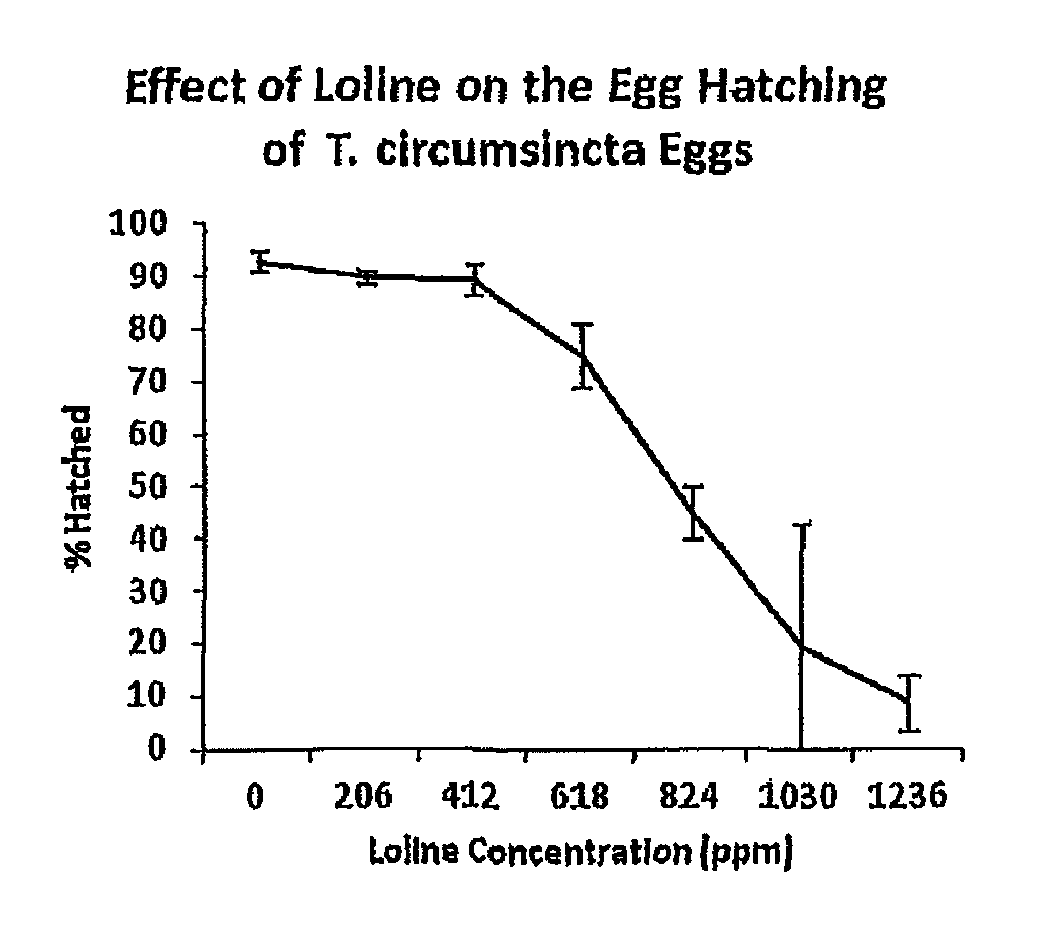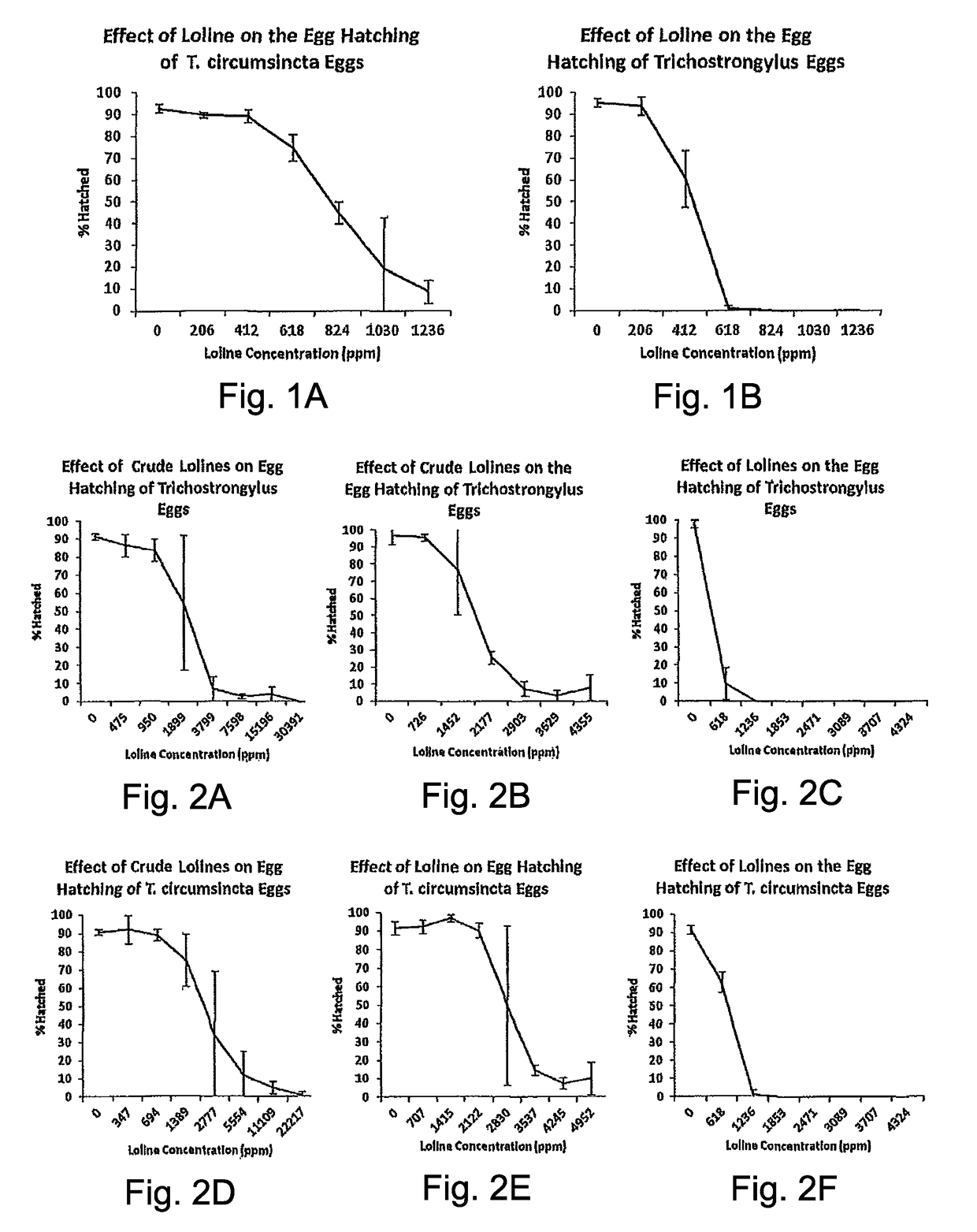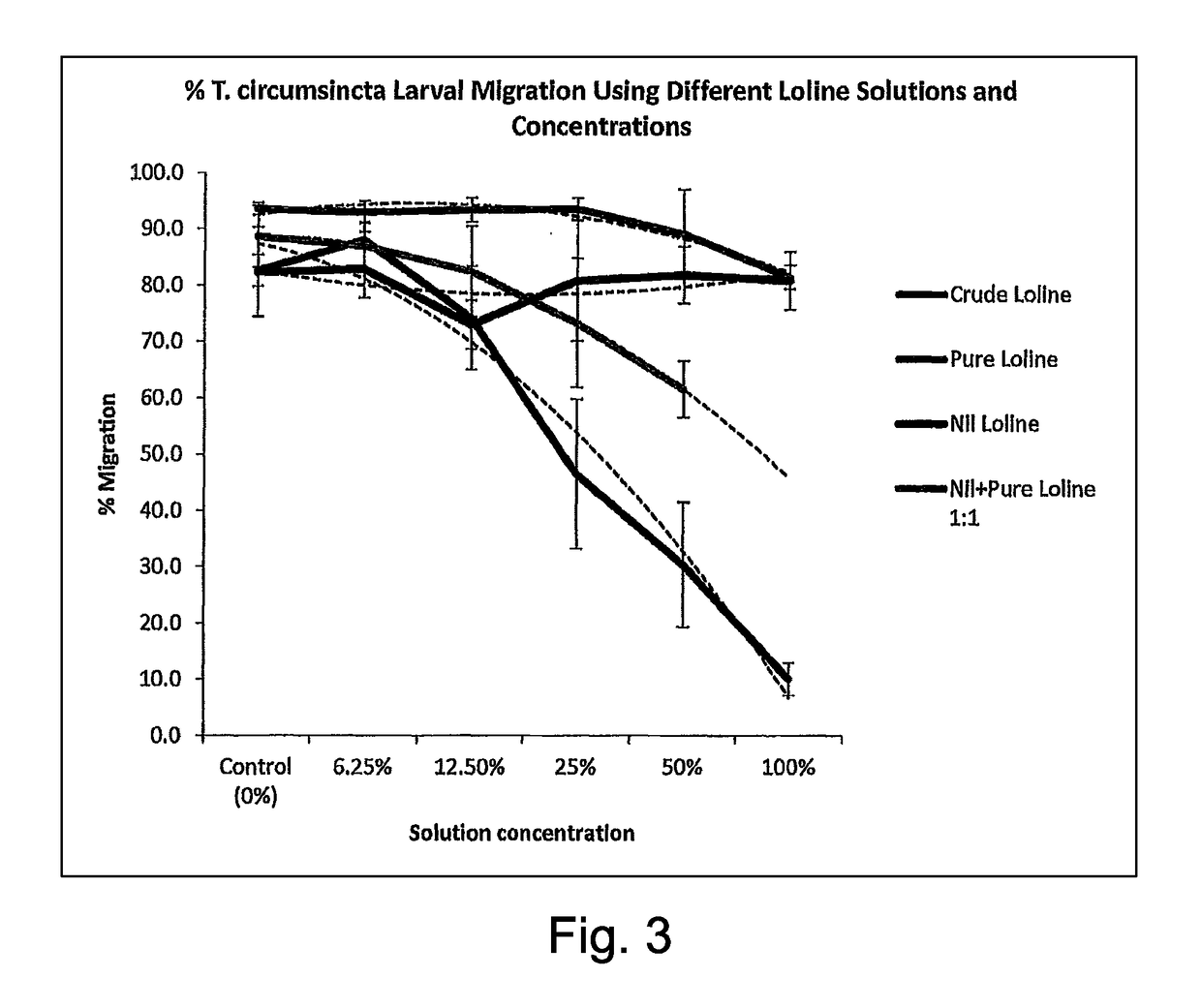Control of parasitic infection in animals
a technology of parasites and alkaloids, which is applied in the field of parasite control of animals, can solve the problems of difficult establishment, difficult to achieve, and difficult to maintain high productivity of producers,
- Summary
- Abstract
- Description
- Claims
- Application Information
AI Technical Summary
Benefits of technology
Problems solved by technology
Method used
Image
Examples
Embodiment Construction
[0056]The effect of loline alkaloids on intestinal nematodes was determined first using in vitro experiments. The laboratory experiments were aimed specifically at determining the effect of loline alkaloids on the motility and attachment of internal parasites to excised abomasal sections of naïve lambs (reduced nematode motility is a measure of possible treatment effects on nematode life cycle which may translate into reduced faecal egg counts (FEC) in live animals). Reduced FEC can lead to a reduction in pasture contamination consequently slowing down the dynamics of animal infection (Hoste et al., 2006). This assay is an indicator of potential anthelmintic effects or, as a stimulator of the immune exclusion / prompt rejection (IR / PR) response, due to loline alkaloids. Larval migration (a common test to determine the anti-parasitic activity of a chosen compound) was tested. The effects on the nematode egg hatching rate when exposed to lolines was also observed. A reduction in egg hat...
PUM
| Property | Measurement | Unit |
|---|---|---|
| Dimensionless property | aaaaa | aaaaa |
| Mass | aaaaa | aaaaa |
| Mass | aaaaa | aaaaa |
Abstract
Description
Claims
Application Information
 Login to View More
Login to View More - R&D
- Intellectual Property
- Life Sciences
- Materials
- Tech Scout
- Unparalleled Data Quality
- Higher Quality Content
- 60% Fewer Hallucinations
Browse by: Latest US Patents, China's latest patents, Technical Efficacy Thesaurus, Application Domain, Technology Topic, Popular Technical Reports.
© 2025 PatSnap. All rights reserved.Legal|Privacy policy|Modern Slavery Act Transparency Statement|Sitemap|About US| Contact US: help@patsnap.com



